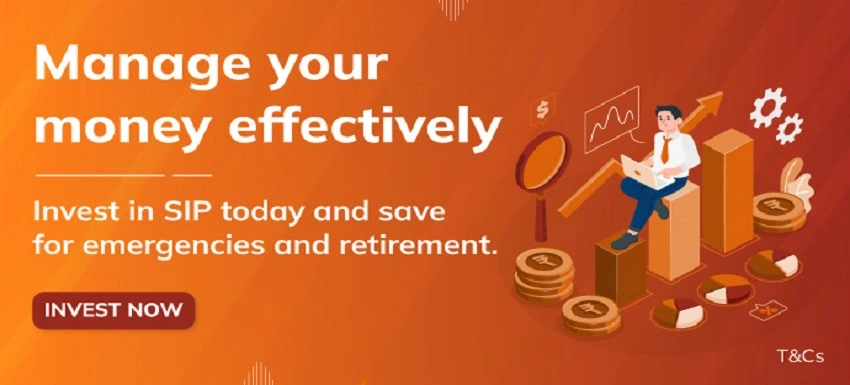THE
ORANGE
HUB
What is Yield to Maturity & Why it Matters?

Investing can be challenging, but understanding Yield to Maturity (YTM) is crucial. YTM is a metric that plays a crucial role in evaluating the potential returns of bond investments. Although it may sound complex initially, YTM reflects the anticipated overall return an investor can expect if a bond is held until maturity, considering factors such as the current market price, coupon interest rate and the time remaining until maturity. This guide seeks to demystify YTM, explain its definition, analyse its components and emphasise its significance in making informed investment decisions. Understanding YTM is crucial for investors. It unlocks better comprehension of fixed-income returns.
What is Yield to Maturity?
Yield to Maturity is a measure that calculates the total return an investor can expect from a bond if it is held until it matures. This comprehensive yield considers the regular interest payments, coupon payments and any potential capital gain or loss upon the bond's maturity. It provides investors with a realistic view of the potential returns from a bond over its entire lifespan.
The components of Yield to Maturity
Understanding YTM involves studying its fundamental components, each contributing to the overall calculation:
Coupon interest rate:
The annual interest rate that the bond pays, typically expressed as a percentage of its face value.
Current market price
The actual market price at which the bond is currently trading, which may be higher, lower or equal to its face value.
Time to maturity
The number of years remaining until the bond reaches its maturity date when the principal amount is repaid.
Why does Yield to Maturity matter?
Coupon interest rate
The annual interest rate that the bond pays, typically expressed as a percentage of its face value.
Current market price
The actual market price at which the bond is currently trading, which may be higher, lower or equal to its face value.
Time to maturity
The number of years remaining until the bond reaches its maturity date when the principal amount is repaid.
How to calculate Yield to Maturity: Simplifying the process
Calculating Yield to Maturity can be simplified with a straightforward formula:
This formula summarises the essential elements of YTM, considering the annual interest payment, the difference between the face value and current market price and the time remaining until maturity.
Practical Implications of Yield to Maturity
Let's understand some real-world scenarios to grasp how YTM operates and how it influences an investor's perspective:
Bond selling at par
When a bond trades at its face value, the YTM equals the coupon rate. The investor earns interest income at the stated rate until bond maturity.
Bond selling at a premium
If a bond sells above its face value, the YTM will be lower than the coupon rate. While the investor receives interest income, they might face a capital loss upon maturity.
Bond selling at a discount
If a bond trades below its face value, the YTM will be higher than the coupon rate. In this case, the investor enjoys interest income and may experience a capital gain when the bond matures.
Common misconceptions about Yield to Maturity
YTM vs Current Yield:
It's crucial to distinguish between YTM and the current yield. While YTM provides a comprehensive view of potential returns until maturity, the current yield only reflects the annual interest income relative to the bond's current market price.
Constant YTM
Contrary to common belief, YTM is not static. It can change over time, influenced by factors such as fluctuations in interest rates and overall market conditions.
Yield to Maturity in the investment landscape
1. Fixed-Income Investments:
Comprehensive bond return perspective: YTM plays a key role in fixed-income investments by providing a broad perspective on potential bond returns. Unlike simplistic metrics, YTM considers not just the regular interest payments but also the impact of the bond's market price and time to maturity. This holistic approach enables investors to assess the overall yield they can expect, making it a valuable tool for those navigating the landscape of fixed-income securities.
Risk-Return assessment: YTM aids investors in assessing the risk and return dynamics of fixed-income investments. By factoring in potential capital gains or losses upon maturity, investors gain insights into the overall risk of holding a particular bond until it matures. This nuanced understanding is crucial for making well-informed decisions and aligning investment choices with risk tolerance.
Comparative analysis: YTM facilitates comparative analysis in fixed-income securities where choices abound. Investors can use YTM to compare different bonds with varying coupon rates, maturities and market prices. This comparative approach allows for a better evaluation of investment options, enabling investors to choose bonds that align with their financial objectives and risk preferences.
2. Long-Term Planning:
Stability and predictability: Investors focusing on long-term stability and predictability find YTM invaluable. YTM considers the entire lifespan of a bond, offering insights into the cumulative returns over the long term. This feature is particularly beneficial for investors planning for future financial milestones, such as retirement or education expenses, where a stable and predictable income stream is crucial.
Informed investment strategy: YTM plays a significant role in shaping a well-informed long-term investment strategy. Investors can use YTM to assess the potential returns from different bonds and align their investment choices with specific financial goals. Whether aiming for consistent income or capital appreciation over the long term, YTM empowers investors to make strategic decisions that resonate with their financial aspirations.
Risk Management: Long-term planning often involves careful risk management. YTM helps investors manage risk by factoring in market fluctuations. This proactive risk management approach is crucial for maintaining financial stability over time.
YTM is a tool for investors that goes beyond basic metrics. It considers various factors that can affect bond returns, making it an essential tool for anyone looking to navigate the complexities of fixed-income investments or chart a path to long-term financial stability. With YTM, investors can make informed decisions that align with their unique financial objectives and risk tolerance.
Conclusion
YTM is not a complicated concept meant only for finance experts; it's a practical tool that helps everyday investors. By understanding the details of YTM, investors can get a clearer picture of the possible returns on their bond investments. Whether looking for a steady income, comparing different investment options or planning for the long term, YTM provides the information you need to make well-informed financial decisions. So, the next time you deal with bond investments, remember that YTM is a valuable tool that gives you a realistic view of the future returns on your investment.
Scroll to top











